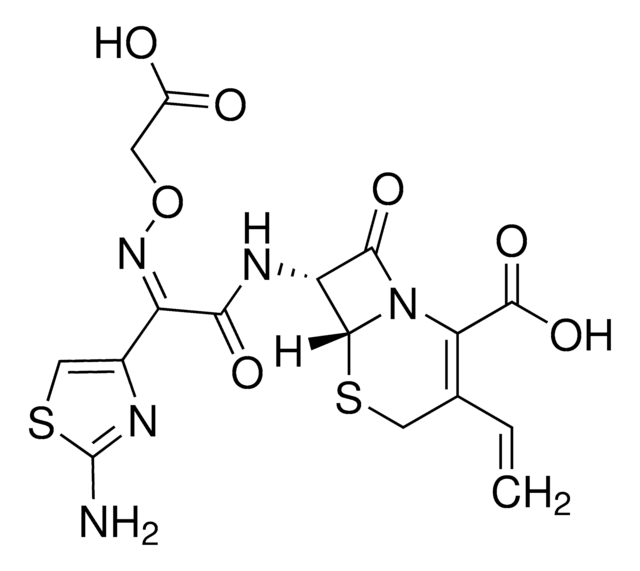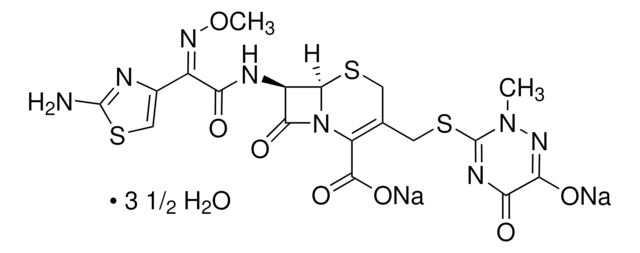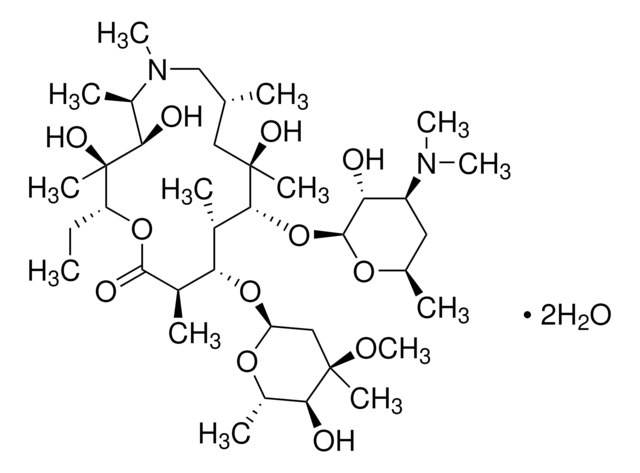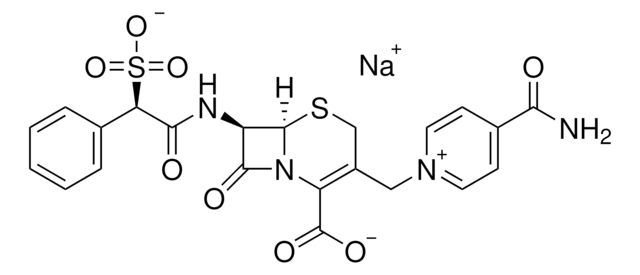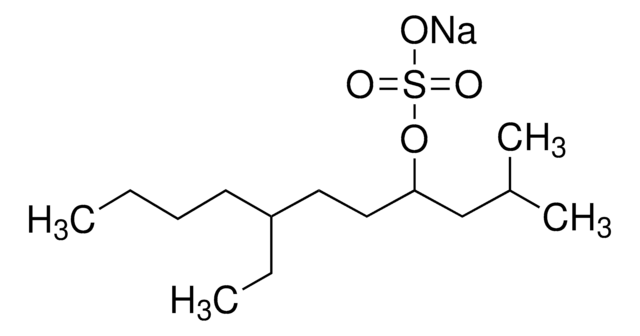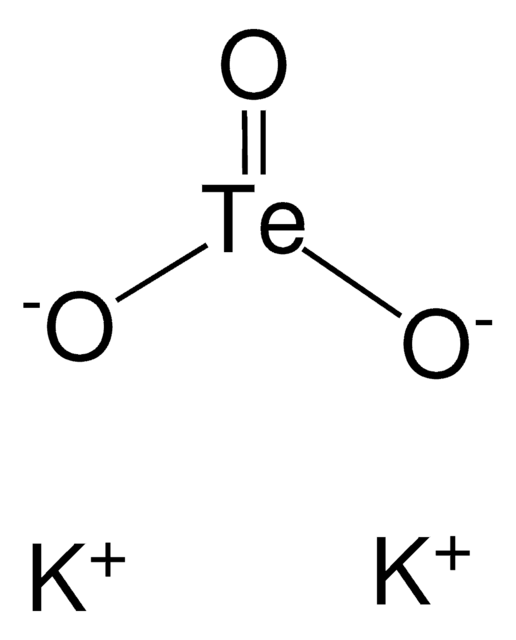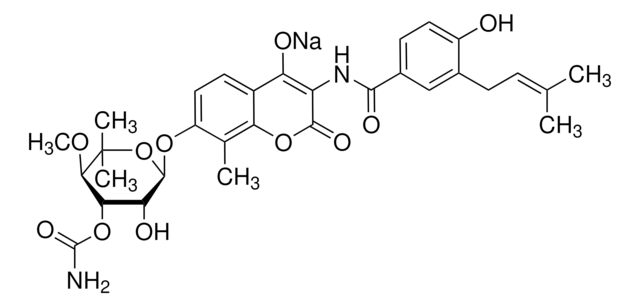18588
Cefixime trihydrate
suitable for microbiology, ≥98.0% (HPLC)
About This Item
Recommended Products
grade
for ion-selective electrodes
Quality Level
Assay
≥98.0% (HPLC)
antibiotic activity spectrum
Gram-negative bacteria
Gram-positive bacteria
application(s)
microbiology
Mode of action
cell wall synthesis | interferes
SMILES string
O.O.O.Nc1nc(cs1)C(=N\OCC(O)=O)\C(=O)N[C@H]2[C@H]3SCC(C=C)=C(N3C2=O)C(O)=O
InChI
1S/C16H15N5O7S2.3H2O/c1-2-6-4-29-14-10(13(25)21(14)11(6)15(26)27)19-12(24)9(20-28-3-8(22)23)7-5-30-16(17)18-7;;;/h2,5,10,14H,1,3-4H2,(H2,17,18)(H,19,24)(H,22,23)(H,26,27);3*1H2/b20-9-;;;/t10-,14-;;;/m1.../s1
InChI key
IPYWNMVPZOAFOQ-NABDTECSSA-N
Application
- Physicochemical parameters and modes of interaction associated with the micelle formation of a mixture of tetradecyltrimethylammonium bromide and cefixime trihydrate: effects of hydrotropes and temperature.: This research delves into the physicochemical behaviors of cefixime trihydrate when mixed with tetradecyltrimethylammonium bromide, focusing on micelle formation and the influence of various hydrotropes and temperature changes on their interaction (Hossain M et al., 2023).
- Development, validation and greenness assessment of a new electro-driven separation method for simultaneous analysis of cefixime trihydrate and linezolid in their fixed dose combination.: This study introduces and validates a novel eco-friendly electro-driven method for analyzing cefixime trihydrate in combination with linezolid, emphasizing its application in fixed-dose pharmaceutical formulations (Habeeb MR et al., 2023).
- Bioremediation of multifarious pollutants using laccase immobilized on magnetized and carbonyldiimidazole-functionalized cellulose nanofibers.: Investigates the efficacy of laccase enzymes, immobilized on specialized cellulose nanofibers, in the bioremediation of pollutants, a process applicable to the environmental management of pharmaceutical agents including cefixime trihydrate (Sharma K et al., 2023).
Analysis Note
Other Notes
related product
Signal Word
Danger
Hazard Statements
Precautionary Statements
Hazard Classifications
Resp. Sens. 1 - Skin Sens. 1
Storage Class Code
11 - Combustible Solids
WGK
WGK 3
Flash Point(F)
Not applicable
Flash Point(C)
Not applicable
Personal Protective Equipment
Choose from one of the most recent versions:
Already Own This Product?
Find documentation for the products that you have recently purchased in the Document Library.
Customers Also Viewed
Our team of scientists has experience in all areas of research including Life Science, Material Science, Chemical Synthesis, Chromatography, Analytical and many others.
Contact Technical Service